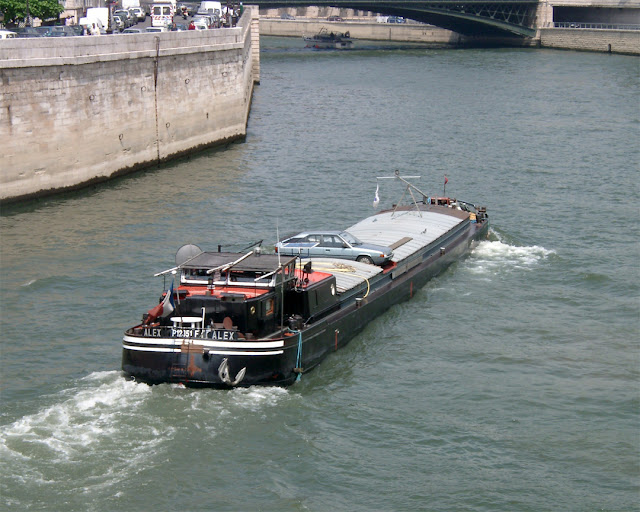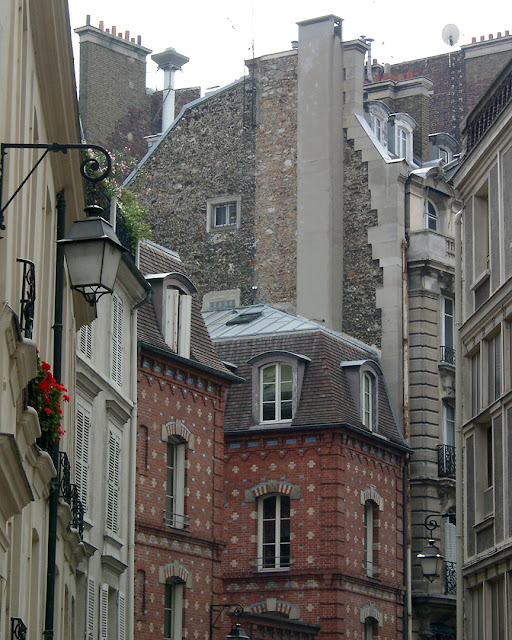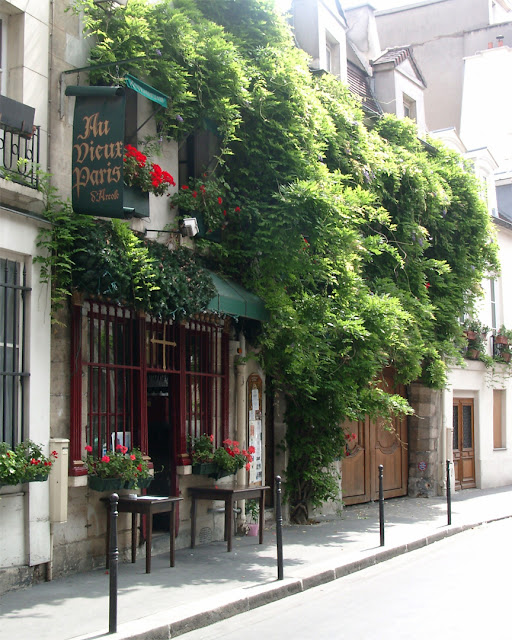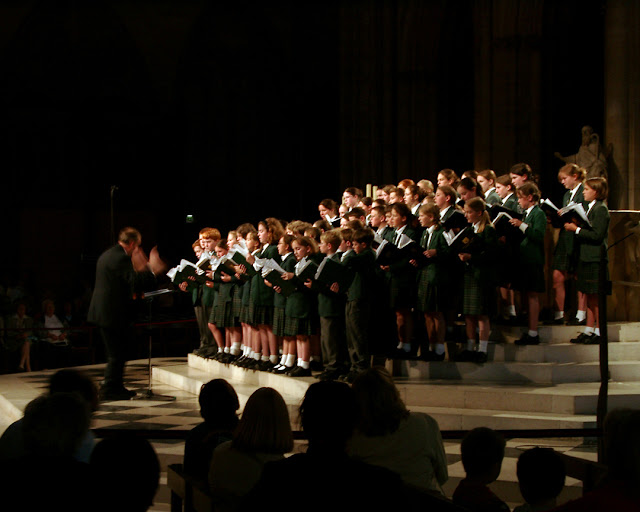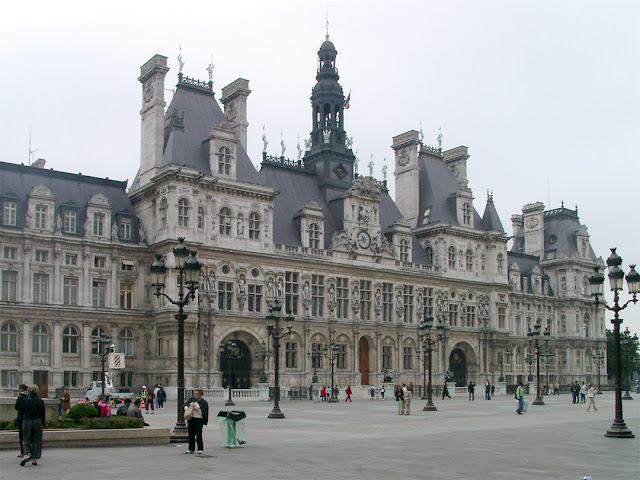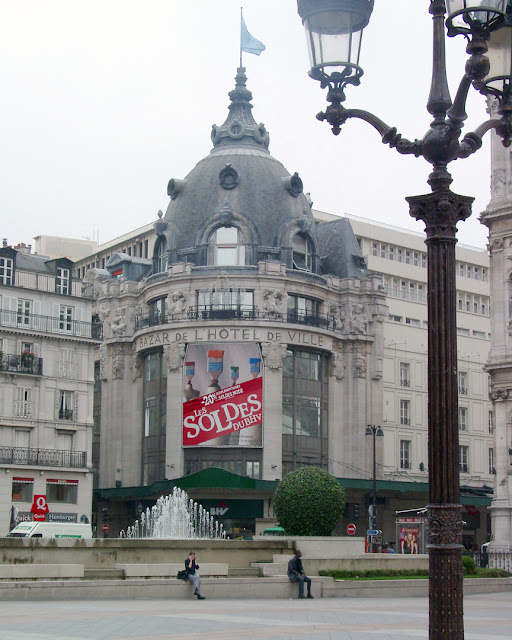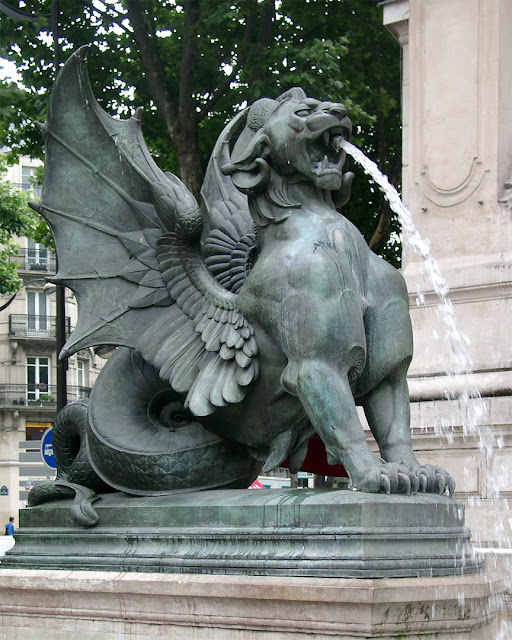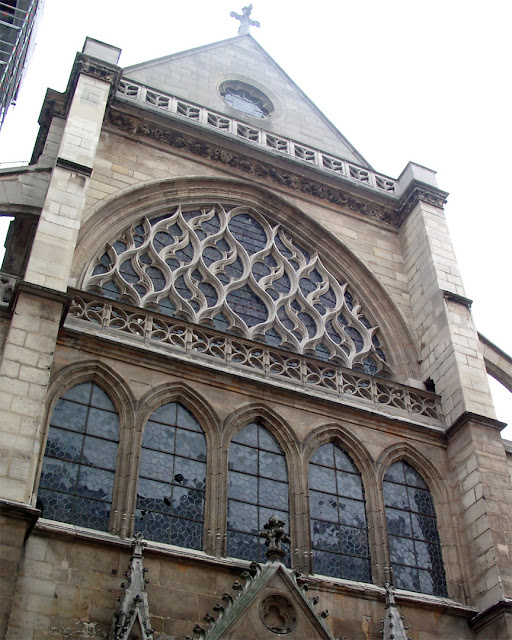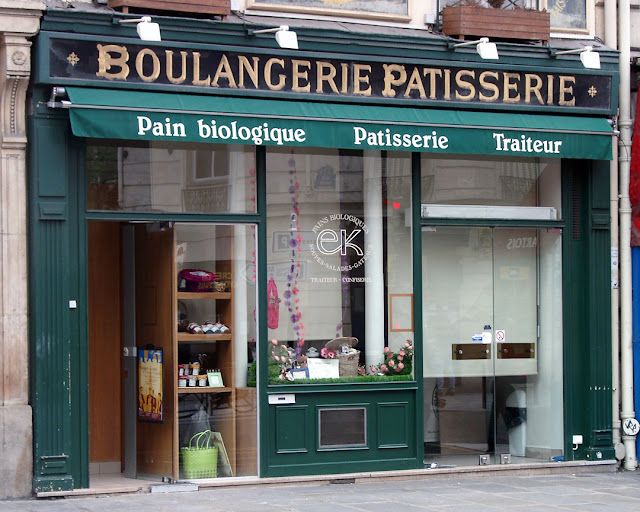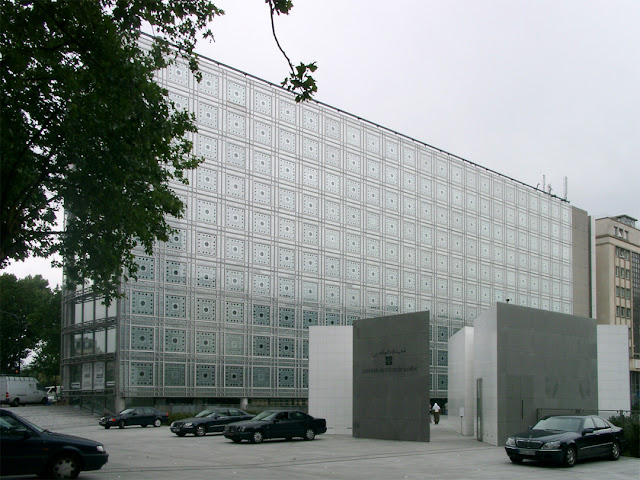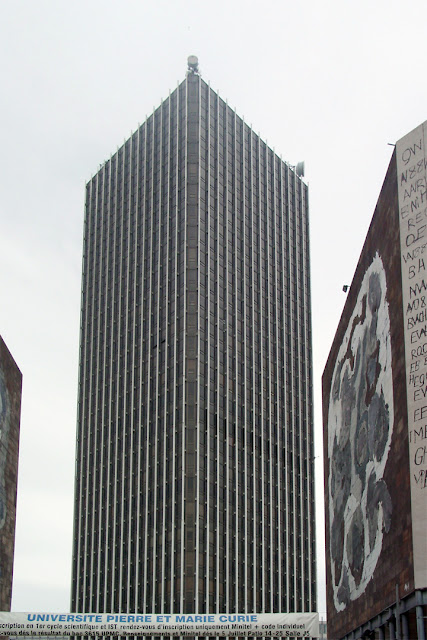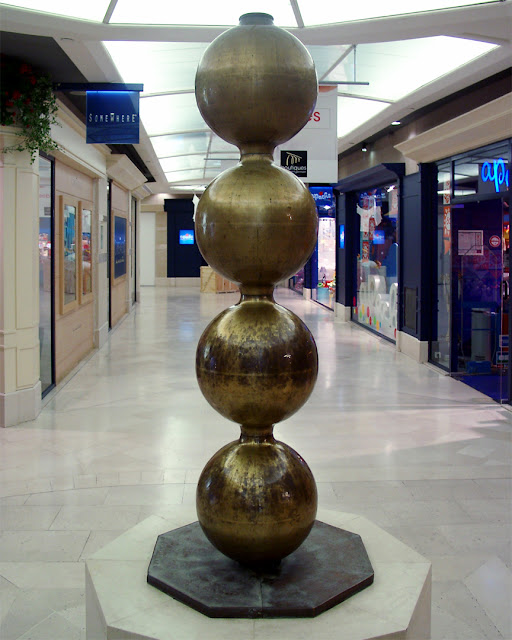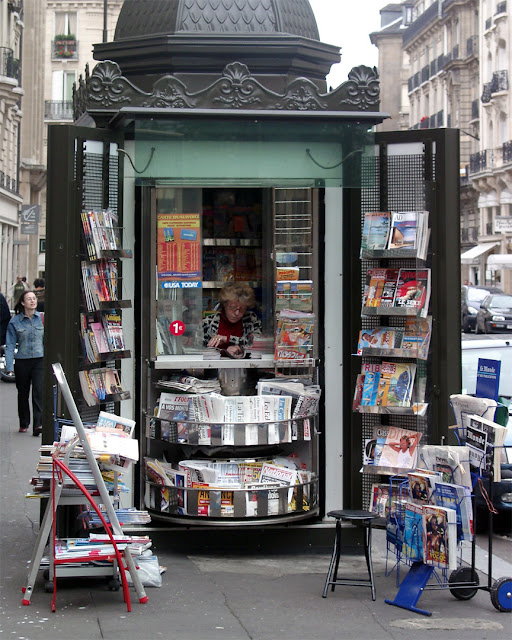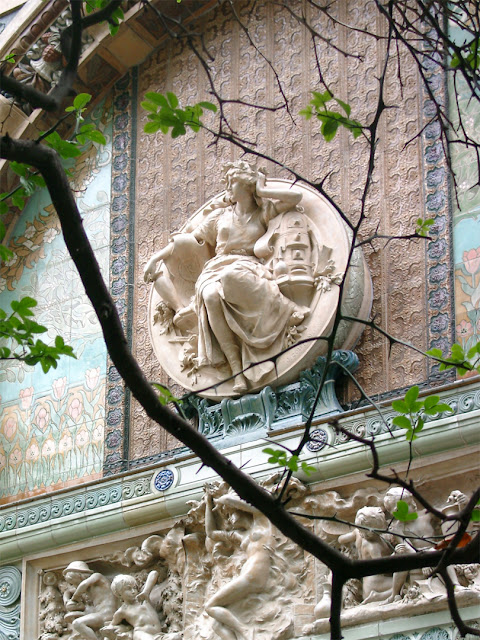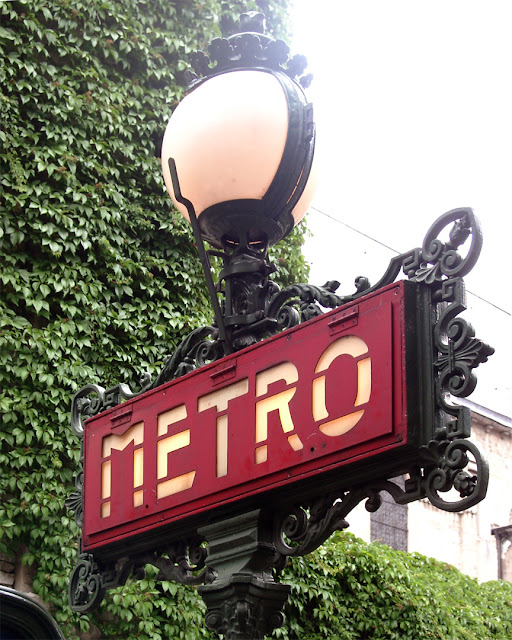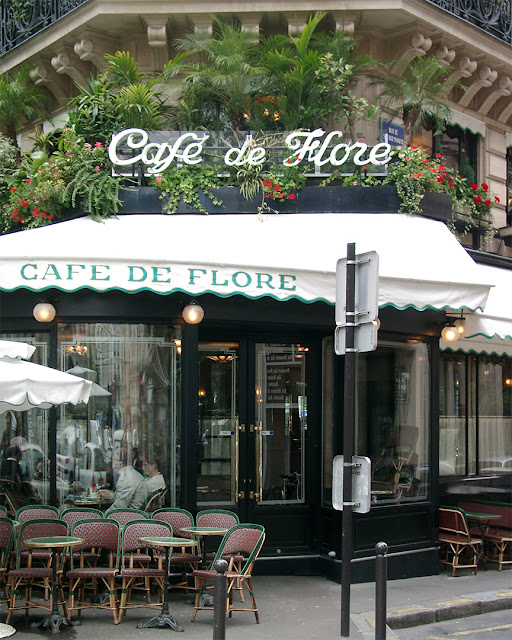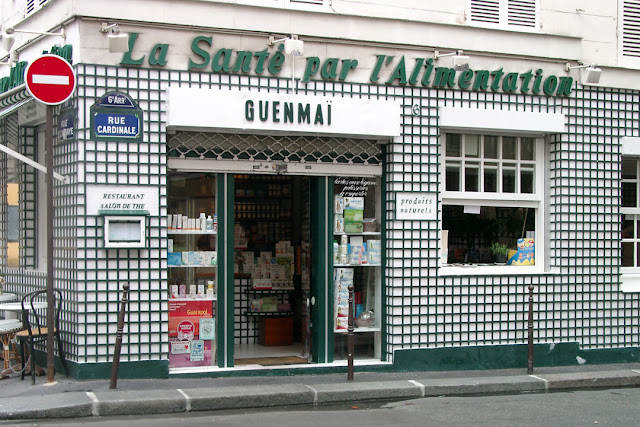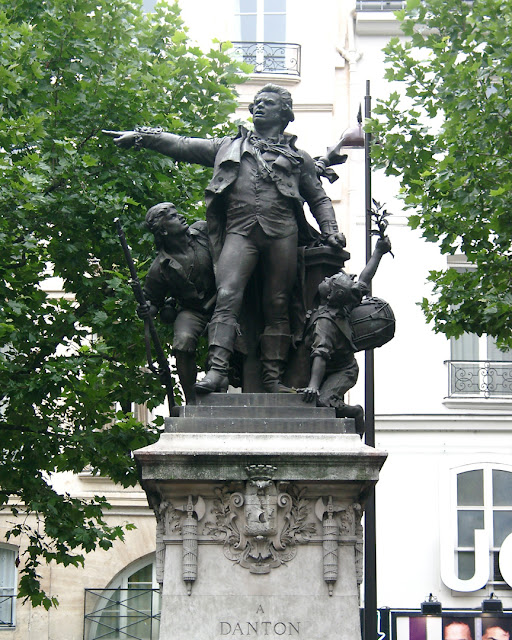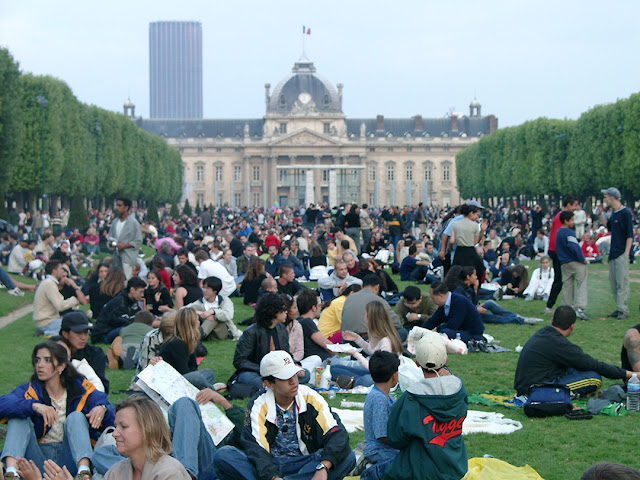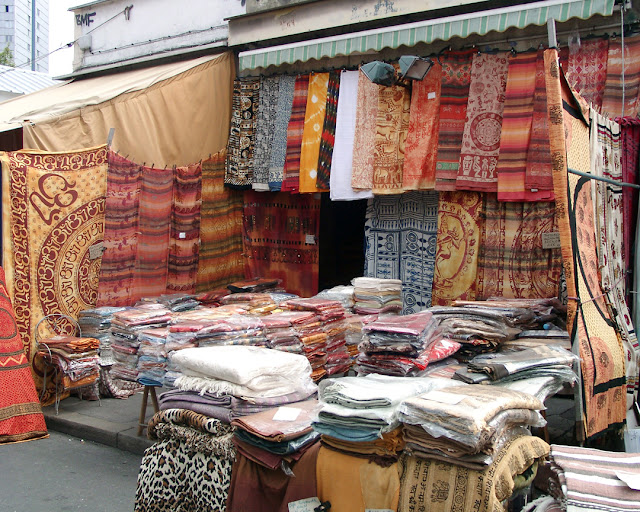Monday, June 30, 2003
Sunday, June 29, 2003
Rue Chanoinesse
École Nationale de la Magistrature (ENM)
Rue Chanoinesse, Île de la Cité
Quartier Notre-Dame, 4th arrondissement
Paris, July 2002
Saturday, June 28, 2003
Au Vieux Paris d'Arcole
Au Vieux Paris d'Arcole
Rue Chanoinesse
Île de la Cité
Quartier Notre-Dame, 4th arrondissement
Paris, July 2002
Friday, June 27, 2003
Memorial tablet
Memorial tablet to the British Empire dead of the First World War
Notre-Dame de Paris
Île de la Cité
Quartier Notre-Dame, 4th arrondissement
Paris, July 2002
“Between 1923 and 1936, the Imperial War Graves Commission erected a series of memorial tablets in French and Belgian cathedrals to commemorate the British Empire dead of the First World War. The tablets were erected in towns in which British Army or Empire troops had been quartered. The prototype Commission memorial tablet, placed in Amiens Cathedral in 1923 alongside tablets previously erected to other Empire troops, was dedicated to the 600,000 dead of Britain and Ireland. The subsequent design of the Commission's tablet brought together the British Royal Coat of Arms with those of India and the imperial dominions: South Africa, Australia, Canada, New Zealand, and Newfoundland. The tablet's inscription, written by Rudyard Kipling, referred to the ‘million dead’ of the Empire. Produced by Reginald Hallward to a design by architect H. P. Cart de Lafontaine, the tablets were erected in twenty-eight cathedrals and churches, twenty-three in France and five in Belgium, with the bilingual inscriptions in each country in English and French, and English and Latin respectively. They were unveiled by a range of dignitaries, including members of the royal family, diplomats, politicians, and British Army generals who had commanded troops on the Western Front.” (Memorial tablets to the British Empire dead of the First World War, Wikipedia)
Thursday, June 26, 2003
Children's Choir
Children's choir
Notre-Dame de Paris (Our Lady of Paris)
Île de la Cité
Quartier Notre-Dame, 4th arrondissement
Paris, July 2002
Wednesday, June 25, 2003
Tuesday, June 24, 2003
Jacques de Molay
Plaque commemorating Jacques de Molay
Square du Vert-Galant, Île de la Cité
Quartier Saint-Germain-l'Auxerrois, 1st arrondissement
Paris, July 2002
“When the Pont Neuf, was completed the bridge was at the west end of the Ile de la Cité, overlooking the river. Two small islands originally lay just west of the bridge; the Île a la Gourdaine or Island of the Patriarch, and the Ile aux Juifs, which had been the site of the persecution and execution of Jews, and which on 18 March had been the execution site of Jacques de Molay, the head of the Knights Templar, as well as another Templar leader, Geoffroi de Charney. Both were burned at the stake for heresy. A plaque commemorating Molay's execution sits at the entrance to the square, which now occupies the land.” (Square du Vert-Galant, Wikipedia)
Monday, June 23, 2003
Square du Vert-Galant
Square du Vert-Galant and the Pont Neuf
Equestrian statue of Henry IV
Île de la Cité
Quartier Saint-Germain-l'Auxerrois, 1st arrondissement
Paris, July 2002
“The Square du Vert-Galant is a small, triangular park pointing downstream located at the western tip of the Ile de la Cité, next to the Pont Neuf, in the First Arrondissement of Paris. It was created in 1884 by joining two small islands to the larger island. The Square du Vert-Galant earns its name from Henry IV of France, who was nicknamed Vert-Galant (Green Gallant) due to having numerous mistresses despite his advanced age at the time. Additionally, there is the large bronze Equestrian statue of Henry IV overlooking the square, now oxidized to a green hue.” (Square du Vert-Galant, Wikipedia)
Sunday, June 22, 2003
Hôtel de Ville
Hôtel de Ville
Place de l'Hôtel-de-Ville
Quartier Saint-Merri, 4th arrondissement
Paris, July 2002
“The Hôtel de Ville (City Hall) is the city hall of Paris, France, standing on the Place de l'Hôtel-de-Ville – Esplanade de la Libération in the 4th arrondissement. The south wing was originally constructed by François I beginning in 1535 until 1551. The north wing was built by Henry IV and Louis XIII between 1605 and 1628. It was burned by the Paris Commune, along with all the city archives that it contained, during the Commune's final days in May 1871. The outside was rebuilt following the original design, but larger, between 1874 and 1882, while the inside was considerably modified. It has been the headquarters of the municipality of Paris since 1357. It serves multiple functions, housing the local government council, since 1977 the Mayor of Paris and her cabinet, and also serves as a venue for large receptions.” (Hôtel de Ville, Wikipedia)
Saturday, June 21, 2003
Bazar de l'Hôtel de Ville
Bazar de l'Hôtel de Ville
Place de l'Hôtel-de-Ville
Quartier Saint-Merri, 4th arrondissement
Paris, July 2002
Friday, June 20, 2003
Fontaine Saint-Michel
Fontaine Saint-Michel by Gabriel Davioud, 1860
Place Saint-Michel
Quartier de la Monnaie, 6th arrondissement
Paris, July 2002
Thursday, June 19, 2003
Winged dragon
Winged dragon by Henri Alfred Jacquemart
Fontaine Saint-Michel
Place Saint-Michel
Quartier de la Monnaie, 6th arrondissement
Paris, July 2002
Wednesday, June 18, 2003
Church of Saint-Séverin
Église Saint-Séverin (Church of Saint-Séverin)
Rue des Prêtres Saint-Séverin
Quartier de la Sorbonne, 5th arrondissement
Paris, July 2002
Tuesday, June 17, 2003
Nostradamus cadeaux
Nostradamus cadeaux
Rue Saint-Julien-le-Pauvre
Quartier de la Sorbonne, 5th arrondissement
Paris, July 2002
Monday, June 16, 2003
Sunday, June 15, 2003
Institut du monde arabe
Institut du Monde Arabe (Arab World Institute)
Rue des Fossés Saint-Bernard
Quartier Saint-Victor, 5th arrondissement
Paris, July 2002
Saturday, June 14, 2003
Tour Zamansky
Tour Zamansky by Édouard Albert, 1970
Campus Pierre-et-Marie-Curie
Quartier Saint-Victor, 5th arrondissement
Paris, July 2002
Friday, June 13, 2003
Thursday, June 12, 2003
Wednesday, June 11, 2003
Kiosque à journaux
Kiosque à journaux (Newsstand)
Boulevard Saint-Germain?
Quartier Saint-Germain-des-Prés, 6th arrondissement
Paris, July 2002
Tuesday, June 10, 2003
Portique Sèvres
Portique Sèvres by Jules-Félix Coutan, 1900
Square Félix Desruelles
Boulevard Saint-Germain
Quartier Saint-Germain-des-Prés, 6th arrondissement
Paris, July 2002
Monday, June 9, 2003
Totem Val d'Osne
Métro signpost, Val d'Osne variant
Boulevard Saint-Germain
Quartier Saint-Germain-des-Prés, 6th arrondissement
Paris, July 2002
“Also known as masts or totems, distinctive Métro signposts were a 1920s innovation of the Nord-Sud company. In the early years, two styles arrived in succession. The Val d'Osne variant (named after an iron foundry, and visible at Saint Paul) consists of a globe-shaped lamp atop a ‘MÉTRO’ sign surrounded by an ornate cast-iron frieze. The simpler Dervaux lampposts (named after their architect) became common in the 1930s, following the contemporary trend away from decorative embellishment.” (Architecture of the Paris Métro, Wikipedia)
Sunday, June 8, 2003
Café de Flore
Café de Flore
Boulevard Saint-Germain
Quartier Saint-Germain-des-Prés, 6th arrondissement
Paris, July 2002
“The Café de Flore is one of the oldest coffeehouses in Paris, celebrated for its famous clientele, which in the past included high-profile writers and philosophers. It is located at the corner of Boulevard Saint-Germain and Rue Saint-Benoît, in Saint-Germain-des-Prés in the 6th arrondissement. The nearest underground station is Saint-Germain-des-Prés, served by line 4 of Paris Métro. The coffeehouse still remains a popular hang-out spot for celebrities and its status attracts numerous tourists.” (Café de Flore, Wikipedia)
Saturday, June 7, 2003
La tête de Dora Maar
Monument to Guillaume Apollinaire by Pablo Picasso
“La tête de Dora Maar” (The head Dora Maar)
Square Laurent Prache
Quartier Saint-Germain-des-Prés, 6th arrondissement
Paris, July 2002
Friday, June 6, 2003
Guenmaï
Guenmaï, la santé par l'alimentation
Restaurant, salon de the
Rue Cardinale
Quartier Saint-Germain-des-Prés, 6th arrondissement
Paris, July 2002
Thursday, June 5, 2003
Monument à Danton
Monument à Danton (Monument to Danton) by Auguste Paris, 1891
Place Henri-Mondor
Quartier de l'Odéon, 6th arrondissement
Paris, July 2002
Wednesday, June 4, 2003
Waiting for the fireworks
Waiting for the fireworks
Champ-de-Mars
Quartier du Gros-Caillou, 7th arrondissement
Paris, July 2002
Tuesday, June 3, 2003
Monday, June 2, 2003
Subscribe to:
Comments (Atom)

